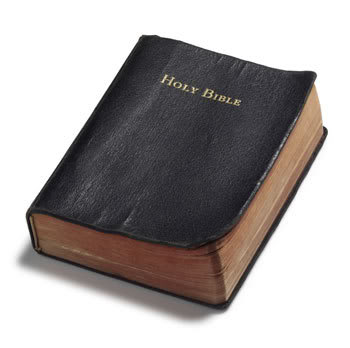Weights
 From the beginning only gold and silver were weighted, others were measured.
There were no coins only nuggets, sticks or pieces of metal in various
shapes. The basis of weight was one shekel called as shekel of the sanctuary
because it was kept in tabernacle as a standard (Exodus 30,13;
Exodus 38,24-26).
From the beginning only gold and silver were weighted, others were measured.
There were no coins only nuggets, sticks or pieces of metal in various
shapes. The basis of weight was one shekel called as shekel of the sanctuary
because it was kept in tabernacle as a standard (Exodus 30,13;
Exodus 38,24-26).
In gold a shekel weighted 16 grams, later about 11 grams. By time it was counted only 50 shekel to a pound.
In silver the weight was little less, shekel little over 14 grams, a pound had 700 grams and a talent 42 kg.
At
Amos 8,5 was shekel used in mean of weight (shekel great=to increase the
weight of standard weight).
In Bible there are mentioned following weights:
- 1 gerah (Exodus 30,13; Leviticus 27,25; Numbers 3,47; Numbers 18,16 and Ezekiel 45,12), (nugget, heller, farthing) = 0,8 gram
- 1 shekel = 20 gerahs = 16 grams
- 1 pound (1st Kings 10,17), (mine) = 60 shekels = 960 grams
- 1 talent (centner)= 60 pounds = 58 kg
Else the talent is equal to a pound, not to a centner:
- 1 talent = 60 shekels
- 1 centner = 60 talents = 30 kg
There was also so called:
- light shekel = 8 grams
- light pound = 0,5 kg
- heavy pound = 1 kg
Else there is:
- 1 pound = 50 shekels
- 1 talent = 3000 shekels (instead of 3600)
Coins
From the beginning the payment unit was a shekel (16 grams) of silver.
The real money started to be used as far as in 6th century B.C. (so they were used after Israelite's return from captivity in Babylon). From the beginning a weighted metal was used as mentioned in previous section and the weights were payment units in fact. A unit was a shekel, a mine, a pound, a talent, a centner. The value it is hard to determine - we only can estimate it according the value of gold and silver. Also smaller pieces were used and also bronze was set as exchangeable metal.
In the time of rule of Darius Hystapse the Persian (581-485 B.C.) were stamped first coins drams (dareicoins) with picture of the king kneeling with a bow in one and an arrow in other hand. They are mentioned in Ezra 8,27 and 1st Chronicles 29,7. These coins weighing about 8 grams were common means of payment on East until the era of Alexander the Big. Beside that a dram is also mentioned in Ezra 2,69 and Nehemiah 7,71-73, where is probably meant different coin (darkemonim).
After division of Alexander's empire Jews were under dominion of Ptolemeys a
Seleqs and used Egyptian and Phoenician coins tetradrams, didrams and drams
which were equal to shekel, halfshekel and quartershekel.
Simon Macabeus got the right to stamp his own coins - he stamped silver
shekels, halfshekels and a bronze sixts of shekel. Later also Herodians
stamped their coins, finally with picture of the emperor.
In the New Testament are mentioned following coins:
-
Silver coins:
- 1 shekel (silver (Matthew 26,15), tetradram, fourdram, stater) = 16 grams of silver = 4 pences
- 1 half-shekel (didram, twodram) = 2 pences
- 1 pence (Matthew 18,28; Mark 6,37), silver (Luke 15,8), (dram, "daily coin" - daily worker's salary) = 16 farthings = 4 gram of silver
- There is no American ounce. There is the Avoirdupois ounce which is 28.35 grams and the troy ounce which is 31.10g used for quantifying gold and silver bullion.
Bronze coins:
- 1 farthing (Matthew 5,26; Matthew 10,29; Luke 12,6), assarion) = 4 condrantes
- 1 condrantes (quadrans, forth part of farthing) = 2 mites (Mark 12,42; Luke 21,2), (leptons)
Others:
- 1 mine = 100 pences (pound Luke 19,13). Weight about 500 grams
- 1 talent (Matthew 18,24) = 60 mines or 6000 pences, i.e. 1500 shekels
Cavernous sizes
- 1 log (Leviticus 14,10; Leviticus 14,12; Leviticus 14,15; Leviticus 14,21; Leviticus 14,24) = 6 egg-crust contents = approx. 0,3
- 1 cab (2 Kings 6,25) = 1,2 l = 4 logs
- 1 hin (Exodus 29,40; Leviticus 19,36) = 3 cabs = 3,6)
- 1 measure (seach) (Genesis 18,6; Deuteronomy 25,14; Deuteronomy 25,15; 1 Samuel 25,18; 1 King 4,22; 1 Kings 5,11; 1 Kings 18,32; 2 Kings 7,1; 2 Kings 7,16; 2 Kings 7,18; Proverbs 20,10; Micah 6,10; Matthew 13,33; Luke 13,21; Luke 16,6; Luke 16,7; Revelation 6,6), bath (1 Kings 7,38; 2 Chronicles 2,10; 2 Chronicles 4,5; Isaiah 5,10), firkin (John 2,6) = 2 hin
- 1 ephah (Judges 6,19) = 10 omer (Exodus 16,16; Exodus 16,18; Exodus 16,22; Exodus 16,32-33; Exodus 16,36) = 3 measures = 21,6
- 1 homer (Leviticus 27,16; Numbers 11,32), bath (Ezra 7,22) = 10 ephahs = 216 (Epha was the size for loose materials, bat, hin and log for liquid ones)
Else it is mentioned:
- omer = 3 hins
- bath = 9 hins
- homer = 2 measures
- cab = 2,0
- omer or issaron = 3,6
- seach (sea) = 12
- ephah (ephi) = bath = 36
- letec = 180
- homer = cor = 360
- log = 0,5
- hin = 6,0
Linear sizes
- general cubit (Deuteronomy 3,11) = 40 cm
- king's cubit (Ezekiel 40,5) is bigger for a hand = 55 cm
- romish cubit = 1,5 feet = 64 cm
- 1 cubit = 2 spans = 6 hands (fists, width of 4 fingers) = 24 inches
- 1 reed = 6 cubits = 3,3 m
- 1 stadium = 300 cubits = 192 m
- 1 romish mile = 1000 steps = 1,5 stadium
- walk of one Saturday = 2000 cubits = 969 m
Time data
A (calendar) day began with the sunset and lasted until next-day sunset. A day (without night) was divided to twelve hours and started counting hours from the sunrise (nine hour at Matthew 27,46 responds to our 3 p.m.).
Romans started day from midnight and that way also apostle John speaks.
In the Old Testament there is a mention about a hour in Daniel 3,6 and about a sundial in 2 Kings 20,9.
A night was divided to a first watch until midnight (Lamentations 2,19), a middle watch until to 3 a.m. (Judges 7,19) and a morning watch (Exodus 14,24).
In the New Testament there were 4 watches (Mark 13,35) first in between 6-9 p.m. (even), second (Luke 12,38) between 9-12 p.m. (midnight), third 0-3 a.m. (cockcrowing) and fourth (Matthew 14,25) 3-6 a.m. (morning).
Same as a night was divided to quarters called watches were 12 hours of a day divided (John 11,9) to quarters and every quarter was called as a hour according the hour in which the quarter began.
Thus was first part called as first hour because it started in first hour. A
second part started after third hour and because of that this part was
called as a third hour, third part was called as a sixth hour and forth part
as a ninth hour.
A week had seven days. Days in a week had no names but they were denoted by
numbers. First day after Saturday is our Sunday (1 Corinthians 16,2).
Months
Months were counted according Moon orbit and had 29 or 30 days. Year had 12
months and because year was counted according the Sun, every year always a
few days remained. To set right the residue - every third year was for one
month longer and this month was called Ve Adar.
Months in Bible are noted by numbers or names in following order:
|
Winter started in ninth (Jeremiah 36,22) month and lasted until about eleventh month.
Major annual celebrations and feasts (Exodus 23,14)
- Feast of passover (Leviticus 23,5; Deuteronomy 16,1) for memory of outgoing from Egypt. Feast of passover was called because of eating millet (unfermented) breads; it was also called as Eastern. These feasts was officiated in the 14th day of month Abib (Nisan).
- Feast of harvest was officiated seven weeks after Eastern (Leviticus 23,15; Deuteronomy 16,9).
- Feast of tents or gathering (Leviticus 23,34) was in the fifteenth day of the seventh month, i.e. in autumn, when fruits, grapevine and all harvest was gathered. Feast of tents has it's name because people were staying seven days during the feast in tents for memory of living in tents in desert.
- Feast of Blowing of trumpets (Leviticus 23,24) was the first day of the seventh month. That time calendar year started (on the contrary to ecclesiastic one) and they bought, sold and rented servants and celebrated a jubilee.
- Jubilee was celebrated after seven times seven years every fiftieth year (Leviticus 25,10), when everyone returned to his property and family because that year it was always proclaimed a freedom to all the people in country.

